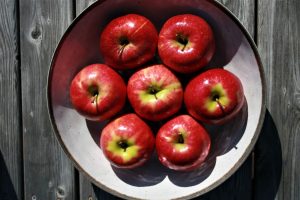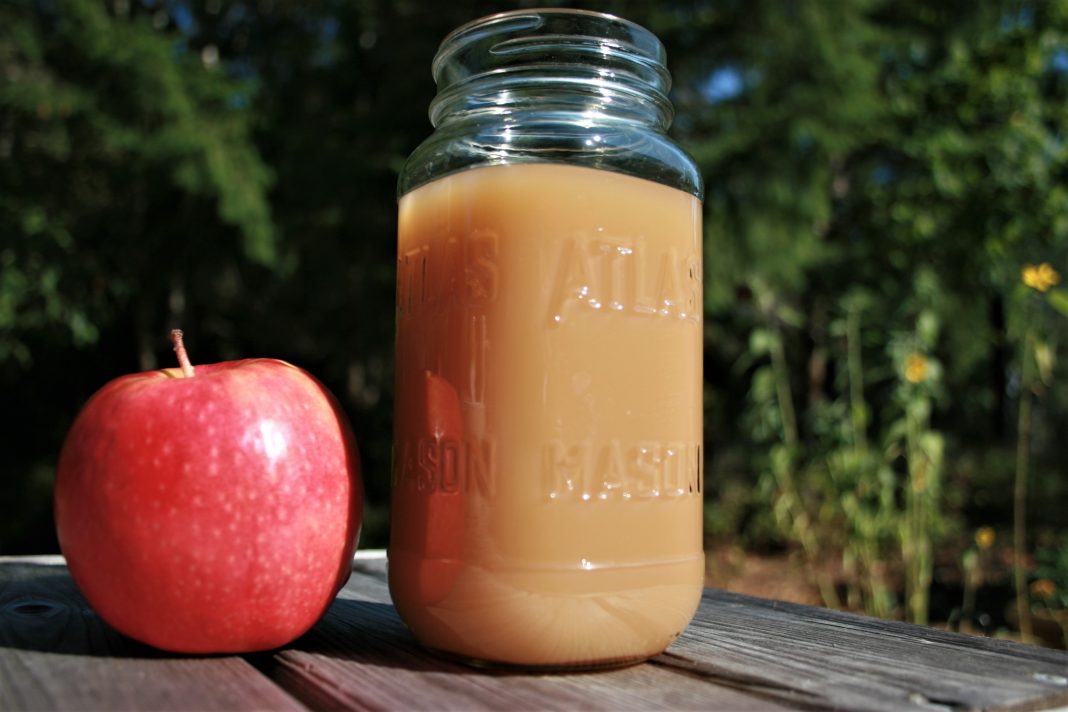Cider is brewing right here in Thurston county. The process and culinary art of brewing cider, including hard cider, has been in existence for thousands of years. From the time it hangs on the tree branch in a Washington orchard, an apple goes through a number of steps to get into your cup as apple or hard cider. There is a combination of natural science and craft behind each brewer’s batch and brand. But, for those of us pondering the amber and bubbles out of curiosity, here is how the apples got from western Washington trees to your glass of cider.
 Step One: Harvest and Wash
Step One: Harvest and Wash
A cider begins with a selection of apple types, from aromatic to tart to neutral. The goal is to achieve the right balance of sweetness, such as from Fuji, gala or red delicious, as well as tartness from the likes of pink lady and Braeburn apples.
“I think many cider makers would agree that apple selection is probably one of the key elements to the taste and quality of cider, hard or otherwise,” says Jason Stenzel, head cider maker at Spire Mountain Cider in Olympia. “Washington has some of the best apples in the world, so it is great to be making cider in a state where there are so many varieties to choose from. We do get our juice already pressed as we don’t have the room to press the amount of apples we would need to use in the batch sizes we make.”
The apples in your cider were picked from the orchard and then delivered into the hands of a cider maker for further examination. All possible dirt and debris were removed to avoid contamination. Lattin’s Country Cider Mill and Farm in Olympia has been repeating the cider making process since 1976 and uses up to 75 tons of apples in a day. Impressively at Lattin’s, the apple sorting, washing and cutting are all done by hand. “We cut out any breaks in the skins and remove any leaves,” Debbie Lattin explains. “That makes a huge difference in the quality and the keeping time of the product.”

Step Two: Chop and Smash
In short order, an apple goes from a shiny orb to a pulpy mush. It is chopped and shredded into small bits during milling. At this stage, apple varieties may be combined or additives may be included to affect taste. Next, apples are pressed through a variety of methods, by the batch or continuously forced through a narrow passage between rollers. If a manual press is used, it screws down a flat surface, compressing the pulp as it releases the juice. Whichever the choice, the apples undergo a great deal of intense pressure to extract every possible ounce of juice, and about 12 pounds of fresh apples are needed to make a single gallon.
Last Step: Pasteurize and Bottle
Here is the point in the process in which you would get regular, nonalcoholic cider. Pasteurization and bottling are completed before the cider is allowed to sit and ferment. That apple, now in liquid form, faces pasteurization, which kills bacteria through a brief heat exposure. Heat also kills the yeast and therefor halts the fermentation that would create alcohol.

Continuing on to Hard Cider: Fermentation
Hard cider is made when the fermentation phase of the cider making process is allowed to continue. Some brewers also add additional yeasts or sugars and natural acids to affect flavor. “I think the optimum hard cider should definitely highlight the type of apple, or pear if you are making a Perry (pear hard cider),” shares Stenzel. “The apples we use are either classified as sweet or semi-sweet varieties. We do not use any artificial additives in our ciders. The only cider that has an additional additive is our Dark and Dry where we add caramelized sugar to create the unique taste and dark color. Since fermentation for hard cider is a bit more straight forward, the apples should really shine through.”
The hard cider in your glass was allowed to ferment, to sit and wait as its yeast turned the sugars into alcohol. The more sugar that was in the apples at the start of the process, the more there was for the natural yeasts to consume and convert into alcohol. When the fermentation time was over, the apple cider was bottled and stored for a final round of fermentation.
A good cider has been appreciated by people for a very long time. Historically, it has been a way to turn unsuitable water into drinkable resource and has even been used as a means of paying one’s tithes or rent. When you look at that cool glass of cider in your hand, know that the apples within it were carefully selected and manicured to remove all imperfections. They were ground and pressed with force for each drop. The bubbles that rise are evidence of the yeast and sugar exchange, which a cider brewer took care to balance. Even better, from apple to glass, the whole process is happening right here in Olympia.



















































